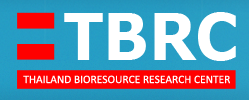Aschersonia novoguineensis P. Henn., Engler's Bot. Jahrb. 25; 509 (1898) Aschersonia javanica Penz. & Sacc., Malpighia 236 (1901) Aschersonia lecanioides P. Henn., Hedwigia 145 (1902)
Teleomorph state: Moelleriella raciborskii (Zimm.) P. Chaverri, M. Liu & K.T. Hodge 2008
Description:Stomata variable, usually circular, flattened pulvinate and widely open, often irregular, rarely discoid, 0.5-4 mm diam., ca. 1-1.5 mm high, white to yellow-white, base surrounded by dense mycelium, often more or less covered by a copious mass of extruded conidia, pale yellow to light orange or orange; conidiomata pycnidial, embedded in stroma, circular, ovoid or irregular, up to 250 µm diam.; paraphyses present, linear up to 80 µm long; phialides cylindrical, up to 50 m; conidia narrow-oval, tapering slightly towards the ends, 12-14 x 2-2.5 µm. The conidia of Thai specimens were longer and wider than those described by Petch (1921) (10-14 x 1.5-2 µm). This was one of the more common species in Thailand and is widely distributed from Africa through the Indian Ocean and South East Asia. It has also recently been found in Australia (Hywel-Jones unpubl. obs.). In its classical appearance this looks like a fried egg with the confluent cream-orange spore masses in the center of the flattened, white stroma. This is one of the easiest species to isolate as conidia will germinate within 24 h on PDA. This was discussed by Petch (1921) and by Mains (1959). Both the Moelleriella and the Aschersonia state have been found throughout the year in Thailand. There are records from Doi Inthanon National Park in the far north to Hala Bala National Park on the Thai-Malay border in the south and from sea level to 1800 meters elevation. This species has also been often recorded from outside of natural forest. It is especially found on scale insects infesting mango, guava, orange, lime and pomelo.
References:Petch, T. (1921). Studies in entomogenous fungi: II. The genera Hypocrella and Aschersonia. Annals of the Royal Botanic Gardens Peredinaya 7: 167-278.
Search this species at:
THAILAND BIORESOURCE RESEARCH CENTER

